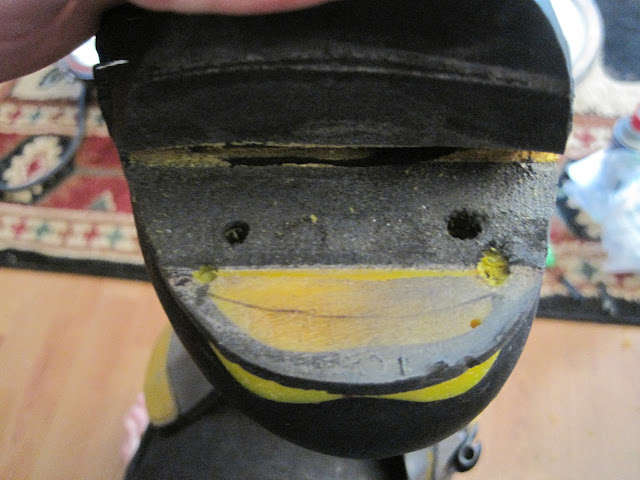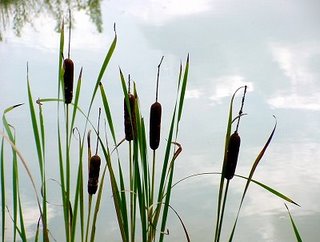

From the "Friends of the Bosque" website (http://www.friendsofthebosque.org/):
"The Bosque del Apache National Wildlife Refuge in New Mexico is an important wintering home for Sandhill Cranes and hosts as many as 14,000 cranes during the winter months. The Bosque is located along the Rio Grande River south of Albuquerque and provides critical habitat for cranes and other migratory birds such as over 32,000 Snow Geese, dozens of Bald Eagles, Avocets and many other birds. The beautiful refuge is also home to small herds of Mule Deer and families of Coyotes. Seeing the sunset "fly-in" and the sunrise "fly-out" is an experience you will never forget!"

Above: "Blue morning at Bosque" - An overcast, snowy, predawn morning makes for a dramatic image of these Sandhill Cranes.
After leaving Yosemite the next stop on my trip was to be Bosque del Apache in New Mexico. The plan was to meet back up with my friend Roger (http:www.rogernordstromphoto.com) in Socorro then head to the refuge the next morning. For those of you that have been following along with my blog, Roger and I started off my trip together with a visit to the Badlands and Black Hills of South Dakota. After that portion of the trip Roger had to head back home, but I continued on my journey and here we are meeting back up again near the end of my trip! Roger was visiting his family in California for Christmas, so he stopped in New Mexico to meet up with me on his way back home.
I arrived in Socorro with enough time to head to the refuge for sunset (Roger wouldn't be arriving for several more hours). Not long after arriving at the refuge I was a little disappointed at the lack of birds. I had visited Bosque back in 2004 during this same week, and remembered seeing LOTS of cranes, and LOTS of snow geese. This time, there were only a few. Oh well, I figured... maybe it was just an "off" night, and more would be around tomorrow.

Above: "Red-Winged Rush" - While driving the roads of the refuge, we spotted this large group of Red-Winged Blackbirds that was flying around one of the fields... they would fly around a bit, then land for a moment, then fly around again. I've never seen so many Red-Winged Blackbirds at one time before. Luckily I had my camera and telephoto lens ready to capture this rush of birds!
The next morning we rose bright and early so we could take advantage of the nice breakfast that was offered at our motel. If you're ever looking for a place to stay in Socorro, I highly recommend the EconoLodge... VERY reasonable rate, the room was spacious and very comfortable, the staff was friendly and they had one of the best breakfasts of any motel I've ever stayed in. Coffee, juice, bagels, waffles, cereal, fresh fruit.... it was a great way to start the day!

Above: "Coyotes on the prowl" - A pair of coyotes working their way along the edge of one of the fields. There was a group of snow geese out in the middle of this field, several hundred yards away from these coyotes. The coyotes had their eyes on the birds... not sure if they got any or not, as they ducked into the brush and I never saw them again.

Above: "Safe Zone" - A group of Canada Geese along with a few Sandhill Cranes rests in a field. The fields provide food and a modicum of protection from coyotes, their main predator at the refuge. The birds are usually clustered in the middle of these fields, so they can see the coyotes coming in time to take off and avoid being caught by one.
After breakfast we hit the road for the refuge, which is about a 25 minute drive from Socorro. It started snowing not long after we got on the freeway. Hmmmm.... probably not going to be much of a sunrise, we thought. We were right about that... no sunrise, it was too cloudy. The snow kept coming down, and at times quite heavily. It ended up being a wonderful morning, with the fresh snow providing a perspective on the refuge that not many people are able to enjoy. Being that this is a desert, they don't get much rain or snow. It was a rare treat. Throughout the morning we saw many small groups of birds but as the day progressed we would see more and more. We spent several days at the refuge, and by the time we left we were quite happy with the birds we had seen.


Above and below: These cranes were out for a morning walk on one of the frozen ponds. After watching them for about a half hour, they began to take off one by one from the ice.

Bosque del Apache was my first exposure to Sandhill Cranes and Snow Geese. Before my visit in late 2004, I had never seen either of these birds. Since then, I have been to Nebraska several times to witness the massive gathering that occurs there every spring. Sandhill Cranes are amazing birds, and I don't think I will ever tire of seeing them. Sandhill Cranes have one of the longest fossil histories of any existing bird. The oldest Sandhill Crane fossil is about 2.5 million years old, over one and a half times older than the earliest remains of most living species of birds!
If you'd like to see some more images of Sandhill Cranes, please visit my blog entries from Nebraska in March of :
http://travisnovitsky.blogspot.com//04/sandhill-cranes-on-platte-river.html
and from March of :
http://travisnovitsky.blogspot.com//03/gathering-on-platte-river.html


Above and below: Experimenting with some slower shutter speeds, trying to "blur" the wings of snow geese as they flew into the refuge at sunset.


Above: Two cranes out for an evening walk.

Above: "Flight Training" - This trio of snow geese flew over us several times as they looped around the farm deck field. Most of the time it seemed as though the two geese behind were chasing the one in the front. I joked with my friend Roger that the one in front was probably the "flight instructor", and was teaching the two behind him how to follow and stay in formation :-)

Above: A typical "blast-off" of Snow Geese at the refuge. When the geese fly out from the refuge, they usually do so in one large group. When an entire field full of these birds decides to take flight all at the same time, it is quite a sight to see. Its also really something to hear the birds when they all take flight. The whole experience is unforgettable. To see a short video of one of the morning "blast-off" events, click this link to my main website:
http://www.travisnovitsky.com/Video-Clips/Misc-Videos/4207197_KrddQ/1/756102917_Wdjg4/Medium
Below: Sunset over one of the irrigation canals at the refuge (the two lights are the headlights of a vehicle approaching on one of the refuge roads). The staff at the refuge use these canals to divert water from the Rio Grande into the fields at the refuge, creating prime habitat for the birds. If you're into wildlife, you should put a visit to Bosque del Apache at the top of your list!















 I didn't quite make it down to the beach for the sunrise, but the sun was playing hide and seek through the clouds when I got there.
I didn't quite make it down to the beach for the sunrise, but the sun was playing hide and seek through the clouds when I got there. It was a chilly morning, but that is sand, not snow.
It was a chilly morning, but that is sand, not snow. Surf and Sea Foam.
Surf and Sea Foam. Sand and Sea Shells.
Sand and Sea Shells. Wind-blown patterns in the sand.
Wind-blown patterns in the sand.



















